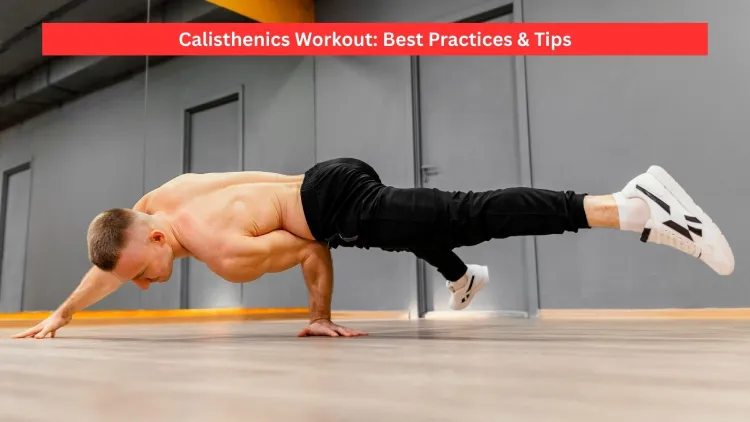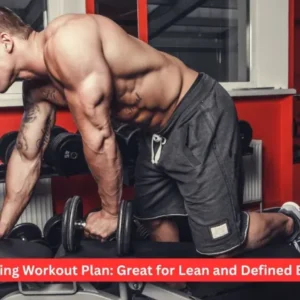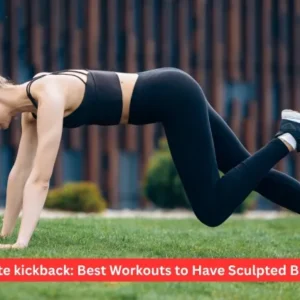One of the training options in 2025 is a calisthenics workout since it is one of the most efficient and universal kinds. It is muscle-building/fat-burning/increases flexibility/doesn’t need a gym or expensive equipment. Practising regularly, eating well, and using progressive overload, you can see the results just within a few weeks. This manual contains a discussion of the best practices, pitfalls to watch out for, basic exercises, training regimen, and the science-to-substantiated benefits of calisthenics as a health and fitness practice.
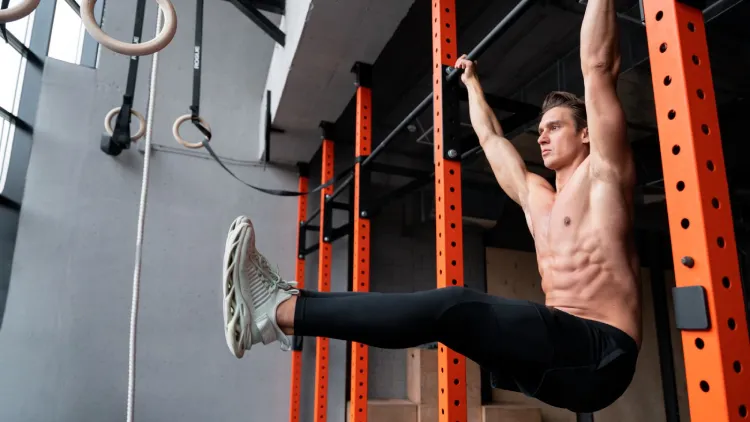
Why Choose Calisthenics Workout in 2025?
Calisthenics workout is one of the most available types of exercise since it only requires body weight the resistance. In contrast to the conventional strength training methods based on endurance sports in gyms, it does not use machines, requires load in the form of weights, nor implies artificial human movements.
- Muscle-building potential: Calisthenics workout does build muscle, contrary to the myths. The progressive overload is utilised by adding repetitions, changes in leverage or mastering a more difficult variant of exercises such as one-arm push-ups and pistol squats.
- Time efficiency: A short daily training session (20-30 minutes) can bring good results even to beginners. Regular, short exercises are useful to burn calories, enhance strength and endurance.
- Convenience: You do not have to pay for a gym membership. Push-ups, planks and squats are some of the easiest exercises that a beginner can do from the comfort of the home, whereas pull-up bars are easily found in parks and playgrounds to help in more advanced training.
- Flexibility to challenge all ages: Depending on whether you are a teen, 30s or 40 or above, you can challenge yourself with calisthenics. As well as the elderly people, the younger age can also gain the advantage of better mobility and joint position.
Simply put, calisthenics workouts deliver quantifiable effects on strength, body composition, and endurance with none of the cost or logistical advantages of mainstream training.
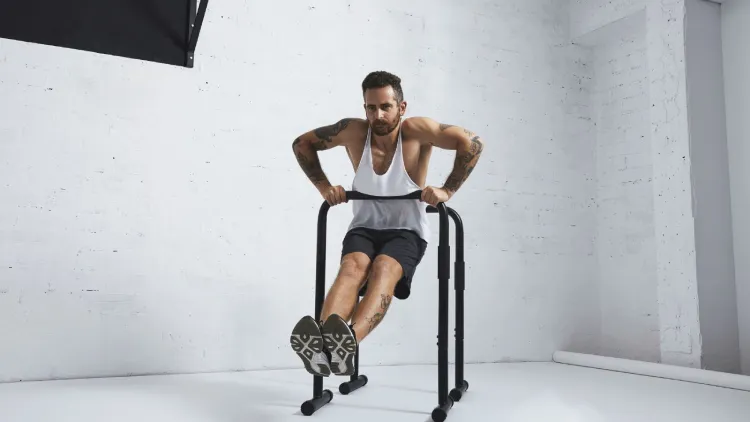
Best Practices for Calisthenics Workout
A systematic plan will be required in case you want sustainable progress. Gains can be maximised and losses averaged by adopting the following best practices.
1. Warm Up and Mobilise
The body is primed through dynamic stretching, light jogging or even easy motions such as arm circles. This averts injuries and improves performance.
2. Begin with Occupational Basics
The building blocks are push-ups, squats, lunges, planks, dips and pull-ups. The said fundamentals provide the platform for additional and harder talents such as the front lever, planche, or handstand push-ups.
3. Use the 80/20 Rule
At the expense of 80 per cent core, compound bodyweight movements, practice only 20 per cent of isolation drills. Such an equilibrium guarantees time-efficient work and more rapid development.
4. Progress Gradually
Rather than seeking the number of more repetitions, make exercises more difficult. An example of this would be to start off doing knee push-ups, then normal push-ups, then archer push-ups, and lastly one-arm push-ups. The strategy encourages the constant development of muscles.
5. Stability Training/Recovery
Muscles do not grow only during workouts, but also when resting. The majority of individuals get the most benefit from 3-5 days per week of calisthenics with a 1-2 days rest or muscle recovery. But active recovery, such as walking or stretching, can be performed every day.
6. Hydration/Nutrition
Giving your body lean proteins, complex carbs, and healthy fats will boost the pace. The diet of callisthenics needs to focus on whole foods, sufficient protein to repair the muscle, and enough calories to accommodate training.
7. Constancy not Strength
A callisthenics workout is gradual, with the outcome showing after 4-8 weeks of regular training. Being disciplined pays off in strength and beauty in the long term.

Common Mistakes to Avoid in Calisthenics Workout
Most of the new and even old students get stuck with preventable mistakes. And the greatest pitfalls are these:
- Ignoring the lower half: Pforce-ups and pull-ups rule the world of calisthenics, but omitting squats, lunges, and calf-raises leaves one form of imbalance or another.
- Rushing abilities: Immediately picking up on handstands (or planches) without adopting fundamentals will only result in frustration and the possibility of causing injury.
- Missing breaks: Work-out routines without recovery places undue stress on joints and shoulders, and elbows in particular. It takes 48 hours to restore muscles.
- Inefficient alignment/Posture: Bad form can lower the effectiveness of the push-up (splaying elbows, flimsy planks) and possibly cause injury.
- Denying progression: At least 3 months of doing the same amount of push-ups or squats will give zero improvements. Ramp it up slow-like.
These are the mistakes to avoid to make sure that a calisthenics workout will be a performance and longevity-building one.
Effective Calisthenics Workout for 2025
Upper Body
- Push-ups: Condition chest, triceps and shoulders. Push-up variations such as the diamond push-up exercise work the inner chest, whereas the archer push-up makes unilateral strength more effective.
- Pull-ups and chin-ups: Tone back and biceps. Australian pull-ups or assisted pull-ups can be a good introduction.
- Dips: Dips are a great exercise to work the triceps and shoulders; dips on parallel bars are harder.
- Muscle-up: Pull-up and dip combination together, it is a demonstration of explosive strength.
Core
- Planks & Side Planks: Strength and Endurance.
- Hollow Body Holds: Build the core strength necessary to do high-level skills.
- Hanging Leg Raises: This hits lower abs and hip flexors.
- L-sits: Static strength training and control.
Lower Body
- Squats: The combination of air squats, single-leg pistol squats develops the quadriceps and the glutes.
- Lunges: Build balance and mobility.
- Glute Bridges: Posterior chain development.
- Calf Raises: Strength exercise, with a benefit for ankle appearance.
Full Body / Expert Moves
- Handstand Push-ups: Shoulder/ Strict core.
- Front and Back Levers: Weight-bearing poses that demand core and lats.
- Planche Progressions: one of the most difficult calisthenics movements, and it demands extreme cardio.
- Burpees: In order to burn fat, combine cardio and strength.
The fact that calisthenics workouts are not a simple combination of push-ups and sit-ups is conclusively demonstrated by these exercises. They sculpt an overall, athletic frame.
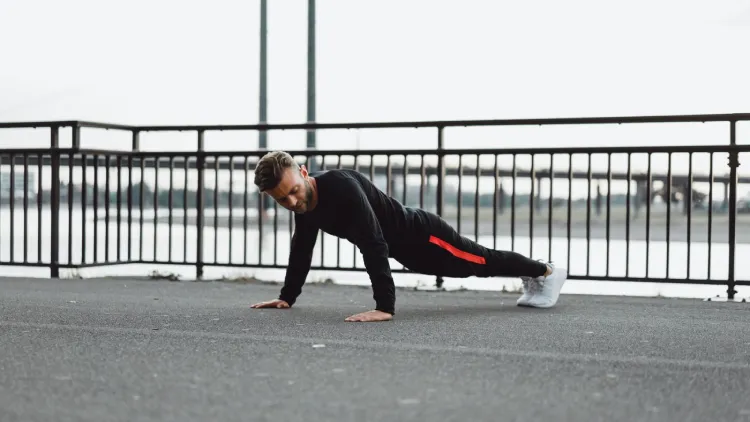
Sample 3-Day Calisthenics Workout Plan
Day 1 – Push (Chest, Shoulders, Triceps)
- Six pack exercises: 4 sets of 12-15
- Dips: 4 sets of 8–12.
- Pike PUSH-UPS: 3 sets of 8-10
- Plank: hold a 3 sets of 45 seconds.
Day 2 – Pull (Back, Biceps, Core)
- Pull-ups: 4 sets of 6–10 reps
- Australian pull-ups: 3 rounds of 12-15
- Hanging leg raises: 3 sets of 10 reps.
- Hollow body hold: 3 x 30sec
Day 3 – Legs & Conditioning
- Squats: 4X 15–20.
- Lunges: 3 sets 12 per leg
- Bridges: 3 sets of 12
- Burpees: 3 x 15 reps.
It is possible to perform this program once a week and have a rest between. Even within the range of 20-30 minutes a day will suffice to induce beginners to make progress.
What Kind of Body Does Calisthenics Build?
But unlike bodybuilding, which concentrates on isolated hypertrophy, a calisthenics workout produces an athletic, lean and functional physique. Improved posture, fleshly outlines and an optimum in strength and flexibility. The upper body is made of push-ups and pull-ups, and legs- squats and lunges.
Doing 100 push-ups every day for months will improve endurance and muscle tone, but a graded progression is advisable to develop well-balanced growth. In the same way, performing 100 squats daily would support lower-body strength and fat loss. Carefully selected progressive training and intelligent nutrition carve a stunning physique over time.
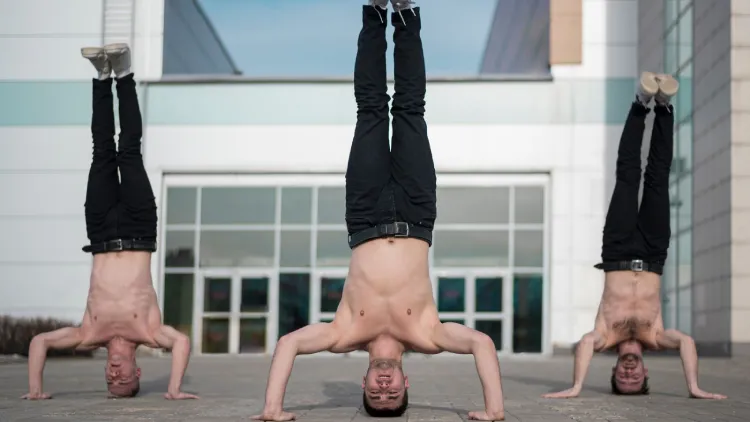
Final Thoughts
Not only is a calisthenics workout of 2025 a fad; it is an effective way of training that builds muscle, burns fat and increases functional strength. Do you have 20-minute per day trainings, or do you have a few hours longer training routines weekly? It does not matter; the thing is to be consistent and smart in your way of progression. No need for posh gyms and heavy weights or advanced equipment. Practising with effort, correct recovery and diet, everyone, regardless of age (18 or 40+), can start and do well in callisthenics.
It not only gives strength but also willpower, empowerment, and control over your body. The true outcome appears when you truly embark on the process, remain constant and keep pushing yourself day by day.
Frequently Asked Questions
1. Is it possible to train a muscle only by calisthenics?
Speaking of building muscle, yes, callisthenics is good under progressive overloading. This is because you can challenge your muscles to grow with and without weights by adding more repetitions, altering the leverage, or progressing to more difficult variations such as one-arm push-ups and pistol squats.
2. What is the duration of a calisthenics workout?
A typical session of 20-45 minutes is beneficial to most people based on their needs and strengths. Absolute beginners can achieve results after only 20 minutes a day, whereas more experienced athletes can spend more time training by applying skill-related drills and strength development.
3. Is callisthenics superior to the gym?
It will depend on your objectives. Bodyweight can be used to achieve an effective callisthenics workout, which increases functional strength, mobility, and endurance. The gyms, however, are more suitable when it comes to isolating specific muscles using heavy weights. A wide range of athletes use both of these in combination as a healthy workout.
4. Would it be possible to begin callisthenics at home, as someone with no experience?
Absolutely. The exercises that need no equipment and are able to be performed in any location include push-ups, planks, squats, and lunges. Those who are just starting eventually can incorporate a pull-up bar or a resistance band over time as more variety and progressions are desired.

